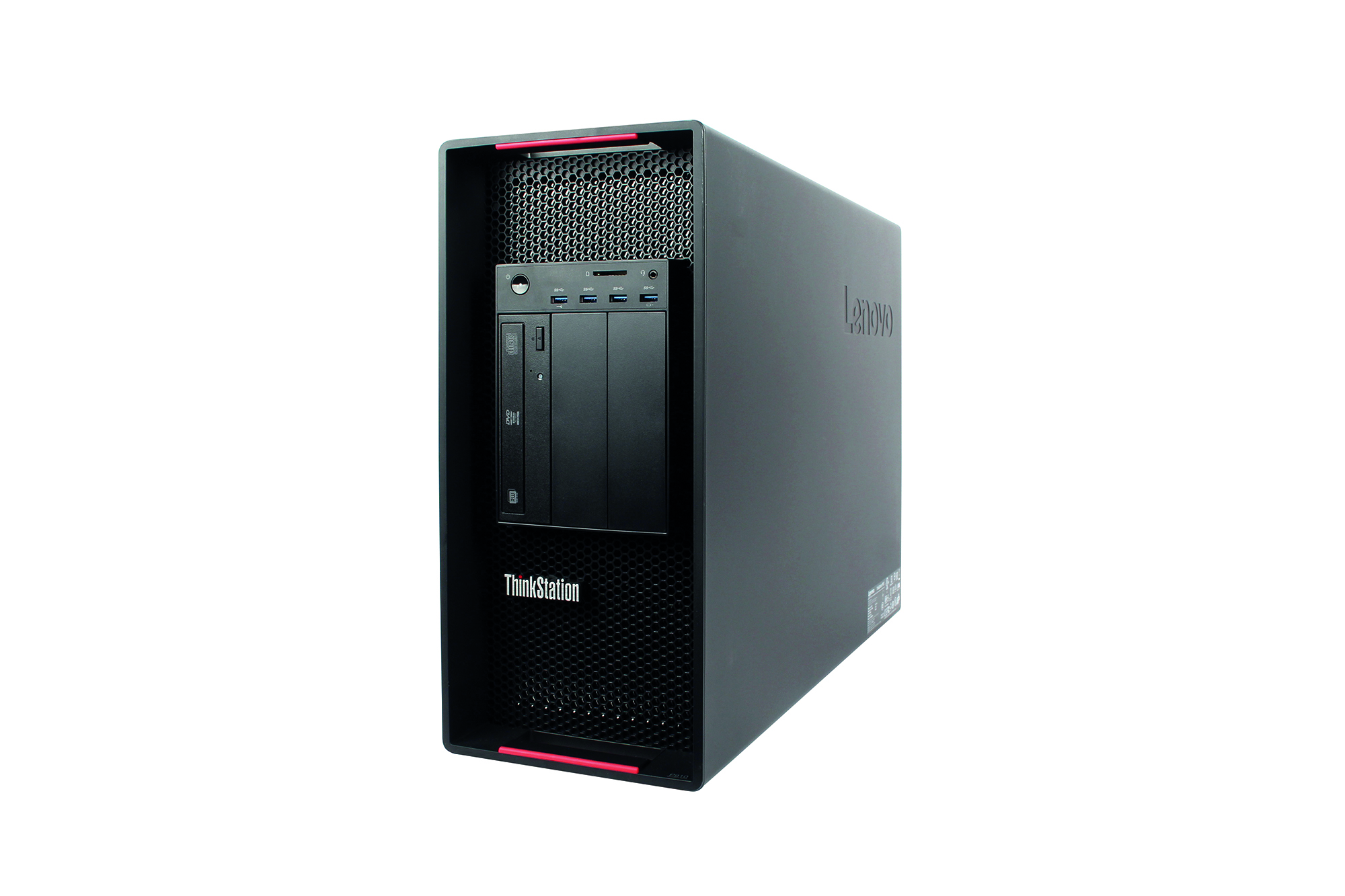Lenovo ThinkStation P910 review
A huge system in every way, with dual Xeons and the fastest professional graphics currently available


This is a blue chip product for a blue chip price, but nobody got fired for buying IBM, even a decade after its PC hardware division was bought by Lenovo.
-
+
Second-fastest PC we've ever tested; Insanely capable specifications; Easy-access case;
-
-
Very expensive

The Lenovo ThinkStation P910 may be twice the price of most other workstations on the market, but it's also in a different league when it comes to performance. That's due to a dual-socket motherboard, twin Xeon processors and the most expensive graphics card currently available - the latter alone is responsible for nearly half the cost.
While most workstations are integrated into high quality but generic chassis, Lenovo is big enough to design its own entirely bespoke cases. And what a job it's done: you can remove almost every component by just pulling the correct combination of clips or levers. The M.2 storage caddies unclip and slide out, and even the PCI Express adapter cards and fans can be released in this way, albeit with some care and dexterity.
Lenovo equipped our review samples with a pair of high-end Intel Xeon E5-2687W v4 processors. It's an understatement to say that these are highly capable CPUs: they have a whopping 12 cores apiece, each running at a nominal 3GHz with a top 3.5GHz Turbo mode. For good measure, there's Hyper-Threading too. This will be a phenomenal platform for CPU-intensive tasks such as rendering, but it's still great for modelling. Lenovo has partnered its twin processors with a hefty 128GB of 2.4GHz DDR4 SDRAM. Should you ever need more, there are eight DIMM slots free for upgrades to a maximum of 1TB.
The core specification is decidedly no nonsense, but this is matched by the graphics provision: enter the Nvidia Quadro P6000. This hugely powerful card costs around 4,400 exc VAT. A direct replacement for the Quadro M6000, the P6000 includes 24GB of GDDR5X memory, which translates into a bandwidth leap from 317GB/sec to 432GB/sec. Even more impressive is the huge jump in CUDA cores from 3,072 to 3,840. That's well over twice as many as a Quadro M4000.
The storage provision on our review sample is more a showcase of what's possible than what you might specify for everyday usage. Our P910 came with a princely total of eight drives - four PCI Express NVMe M.2 SSDs and four 7,200rpm SATA hard disks. The former are all 512GB Samsung SM951 units, which have been superseded by the SM961. The latter are 4TB Hitachi Ultrastar 7K4000 drives. Both choices are a little slower than the very best, but when the SM951 manages reading at 2.4GB/sec and writing at 1.47GB/sec we're certainly not going to complain. Especially when there's a wealth of possibilities for performance RAID configurations to improve things, with 18TB of capacity to call upon.
With two processors and the fastest graphics around, unsurprisingly, the P910 came top of most of our tests. Its Maxon Cinebench R15 rendering result of 3,776 is more than twice what many of this month's systems managed. Only the OpenGL score of 148 was a curious aberration. And thanks to the immense video encoding and multi-tasking potential of the 24 cores, the P910 cruised to the second fastest score we've ever seen in the IT Pro benchmarks. Its OctaneBench 3.04 and LuxMark 3.1 scores were also way ahead, showing the potency of the P6000 for GPU rendering whether with CUDA or OpenCL. Furthermore, the SPECviewperf 12.1 scores were mostly way ahead of the P5000-based systems, although not in every viewset.
It's difficult to judge the P910 against most of its competition, because it's so different in price and uncompromising specification. It may be expensive, but not really any more than you would expect for the amount of hardware included. Moreover, you have to admire the tool-free chassis design, which would streamline upgrade and technical support. This is a blue chip product for a blue chip price, but nobody got fired for buying IBM, even a decade after its PC hardware division was bought by Lenovo.
This review was originally published in PC Pro issue 270.
Verdict
This is a blue chip product for a blue chip price, but nobody got fired for buying IBM, even a decade after its PC hardware division was bought by Lenovo.
Get the ITPro daily newsletter
Sign up today and you will receive a free copy of our Future Focus 2025 report - the leading guidance on AI, cybersecurity and other IT challenges as per 700+ senior executives
Dr James Morris has worked as a technology journalist for over 25 years, including spending nine years on the staff of market-leading computer magazine PC Pro, the last five of which were as the publication’s editor. He specialises in enterprise-grade software and hardware, with a particular focus on content creation. He launched a pioneering video channel for HEXUS.net in 2006 and ran the video reviews channel for TrustedReviews.com for four years. He also runs a successful online digital content and commercial video production company, t-zero communications Ltd.
Dr Morris is a prolific technology writer and contributes commercial content for major IT brands including AMD, BlackBerry, Dell, Cognizant, HP, and IBM. He published a book on artificial intelligence, Can Computers Create Art? in 2009. He is also an academic, and is currently Pathway Director of the MA, Interactive Journalism at City, University of London.
Previously, he was course leader for the BA in Web Media Production at Ravensbourne University. He has a PhD in Philosophy, Art and Social Thought from the European Graduate School in Switzerland, a Master's in Media Arts from the New School in New York, USA, and a Bachelor's in Social Anthropology from the London School of Economics.
Dr. Morris can be found on Twitter at @Cyberwest, or emailed at j@tzero.co.uk
-
 ‘Phishing kits are a force multiplier': Cheap cyber crime kits can be bought on the dark web for less than $25 – and experts warn it’s lowering the barrier of entry for amateur hackers
‘Phishing kits are a force multiplier': Cheap cyber crime kits can be bought on the dark web for less than $25 – and experts warn it’s lowering the barrier of entry for amateur hackersNews Research from NordVPN shows phishing kits are now widely available on the dark web and via messaging apps like Telegram, and are often selling for less than $25.
By Emma Woollacott Published
-
 Redis unveils new tools for developers working on AI applications
Redis unveils new tools for developers working on AI applicationsNews Redis has announced new tools aimed at making it easier for AI developers to build applications and optimize large language model (LLM) outputs.
By Ross Kelly Published
-
 Google layoffs continue with "hundreds" cut from Chrome, Android, and Pixel teams
Google layoffs continue with "hundreds" cut from Chrome, Android, and Pixel teamsNews The tech giant's efficiency drive enters a third year with devices teams the latest target
By Bobby Hellard Published